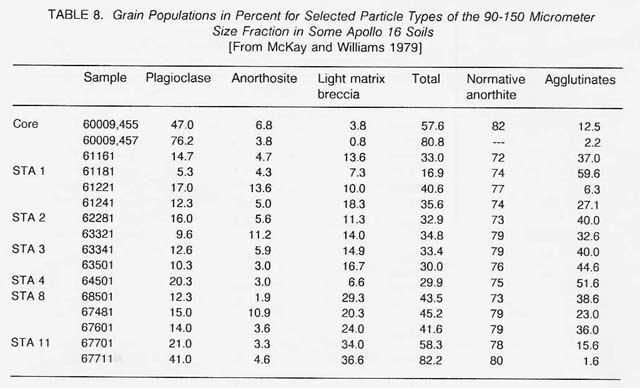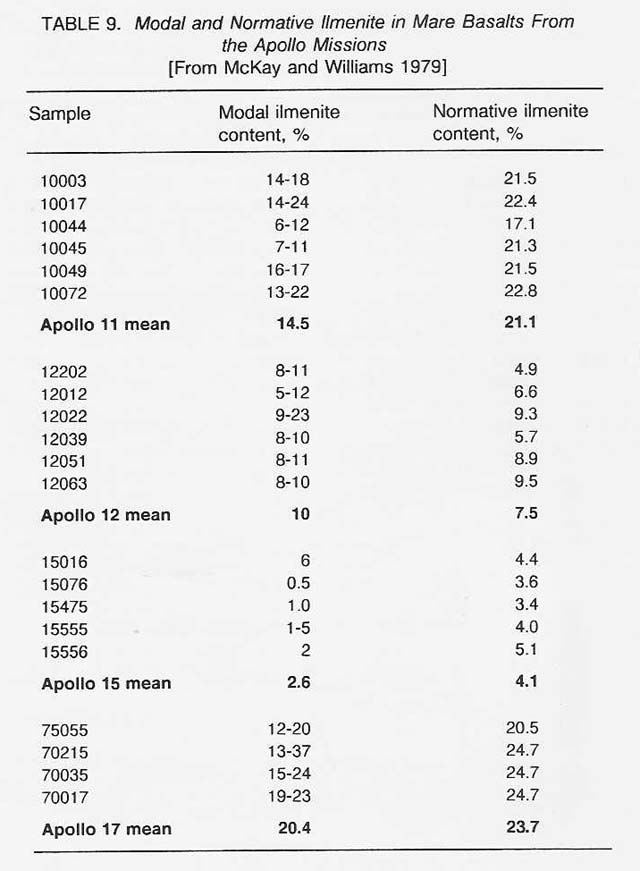
Regolith
The lunar regolith, especially the fraction called "fines" (the particles that are less than 1 mm in diameter), offers the opportunity to take advantage of two different physical processes operating on the lunar surface: (1) brecciation, including pulverization through meteoritic and cometary impact, and (2) solar wind implantation of volatile species. The longer the lunar regolith is exposed to bombardment, the greater the extent of pulverization and implantation of volatile species. However, two counterproductive processes are in operation. First, major impacts result in throw-out of large volumes of material that cover up older regolith. Second, micrometeorite bombardment results in production of agglutinates, which are lunar fines welded together with liquid silicate (glass) (McKay et al. 1971). Thus, there are both destructive and constructive processes operating on the lunar surface.
The heating of the fines associated with micrometeoritic events liberates some of the solar-wind- implanted volatile species (Carter 1985) and plays an important role in the distribution and redistribution of volatiles on the Moon (Wegmuller et al. 1980).
The formation of agglutinates also decreases the availability of minerals, such as plagioclase feldspars and to a lesser extent ilmenite, for concentration from lunar fines (tables 8 and 9; figure 5). But agglutination does produce a small amount of metallic iron (Morris 1980), which should be concentratable by magnetic means. There is, in any case, an upper limit for production of agglutinates (McKay and Basu 1983). The ideal situation would be to have lunar regolith old enough to allow maximum solar wind implantation but not so old as to allow extensive production of agglutinates.


|
Curator: Al Globus If you find any errors on this page contact Al Globus. |
 |
This site was hosted by the NASA Ames Research Center from 1994-2018 and is now hosted by:
